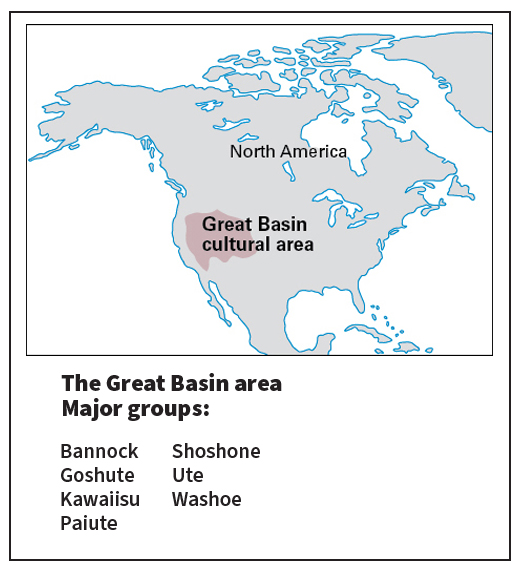Shoshone << shoh SHOH nee >>, also spelled Shoshoni, have lived for countless generations in the desert area of what is now eastern Nevada, southern Idaho, Wyoming, and western Utah. They form three main groups: the (1) Eastern, (2) Northern, and (3) Western Shoshone. The first white settlers in this region, known as the Great Basin, sometimes used the term Snake Indians to refer to the Shoshone people. Sacagawea, a Shoshone woman, became famous for her role as an interpreter with the Lewis and Clark expedition (see Sacagawea).

Before American expansion into the West, the Shoshone maintained a migratory lifestyle in often isolated lands. They formed small, widely scattered family groups that moved with the seasons to gather seeds, roots, and other plant foods. They also hunted birds and small animals such as rabbits. The Shoshone planned their journeys so that they could collect each type of plant as it ripened and visit favorable hunting grounds for each animal. They returned to the same areas once each year, offering thanks to the spirits of the natural world for their harvest.

Many Eastern Shoshone acquired horses in the 1700’s and became buffalo hunters like the Plains tribes. Well-known leaders of these Shoshone included the chieftains Pocatello and Washakie (see Washakie). During the 1800’s, the Shoshone moved to reservations. According to the 2020 U.S. census, there are about 7,200 Shoshone in the United States. Most Shoshone live in Idaho, Nevada, Utah, and Wyoming. Many Shoshone groups have submitted legal claims to lands against the United States government, for the violation of treaties from the 1800’s.
